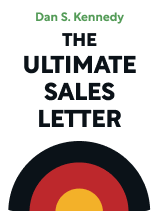

This article is an excerpt from the Shortform book guide to "The Ultimate Sales Letter" by Dan S. Kennedy. Shortform has the world's best summaries and analyses of books you should be reading.
Like this article? Sign up for a free trial here.
How much have you personally used the product you sell? Which is better—mass marketing or a narrow focus?
In The Ultimate Sales Letter, Dan Kennedy shares strategies to craft powerful sales letters that will capture customers’ attention and make them want to buy what you’re selling. Kennedy says you must start with getting to know your product inside and out and identifying and understanding your target customer.
Keep reading for tips on how to know your product and your customer.
Know Your Product
Kennedy says that you should become intimately acquainted with your product so you can highlight its benefits and address its weaknesses in your sales letter.
Kennedy recommends that you get to know your product and how it operates by using it extensively. For example, take it apart, test it, try it out on others, talk with people who use it, and examine competitive products. Going through this process will help you identify your product’s best features and benefits, which you’ll prioritize and highlight for customers in your letter based on their distinct needs and interests.
(Shortform note: Kennedy says it’s important to emphasize the benefits of your product to customers so they understand how it will make their life better or easier. You can practice framing your product’s features as benefits by listing each feature, then describing the specific way it will help buyers.)
Kennedy asserts that, in addition to highlighting your product’s strengths, you must also directly address its limitations in your sales letter to defuse customer concerns and keep them interested in buying your product. He recommends two strategies for countering questions that buyers may have about your product:
- Explain that you’ve conducted extensive research with consumers who didn’t buy your product, list every reason they gave for not buying, then address those issues.
- Present a list of frequently asked questions and answers about your product.
Kennedy suggests you bolster these strategies with testimonials and stories that highlight your product’s strong points or provide guarantees and free trial offers that encourage customers to try your product.
(Shortform note: Being upfront about problems with your product is perhaps more important now than ever. The risk of disgruntled customers publicly airing complaints about your flawed product—and of millions of people hearing them—has grown since Kennedy published the 4th Edition of The Ultimate Sales Letter in 2011. Some marketing strategists recommend that you openly display problems with your product to get ahead of online trolls by featuring your product’s flaws front and center in your content headline and on your website, or by joking about and making light of its problems in your advertising.)
Know Your Customer
Kennedy says that, before you write your sales letter, you have to first identify and understand your target customer so you can address their priorities and pitch your product in a way that resonates with them.
Kennedy recommends that you narrow your focus to people who would buy your product (as opposed to taking a mass marketing approach) and try to find out the following things about them:
- Their greatest worry, fears, frustrations, and dreams
- Their age, income, hobbies, political affiliations, and magazines they read
- Their biases and how they communicate
- Trends impacting their business and life
- Whether anyone else has tried and failed to sell them a product like yours
To home in on your target customer and gather this information, Kennedy suggests immersing yourself in the applicable industry by reading industry publications and websites, subscribing to email groups that prospective customers are part of, attending conventions and trade shows, and talking with people who have insights into your customer base.
| New Ways to Identify and Understand Your Target Customer Since the 2011 publication of The Ultimate Sales Letter, the world of online sales and marketing has expanded, offering new ways to identify your target customer and understand them in greater depth. For example, you can join Q&A forums like Quora and Moz Community to interact with people who are similar to your customers and see what questions they are asking about products and services related to yours. Once you’ve developed a working list of potential buyers, you can create an Ideal Customer Profile (ICP), which will allow you to home in on your perfect customer base and market your product even more effectively. |

———End of Preview———
Like what you just read? Read the rest of the world's best book summary and analysis of Dan S. Kennedy's "The Ultimate Sales Letter" at Shortform.
Here's what you'll find in our full The Ultimate Sales Letter summary:
- How to craft powerful sales letters that will capture attention
- Time-tested foundational strategies in the art of persuasive writing
- Why you don't need a college degree to be a successful copywriter






